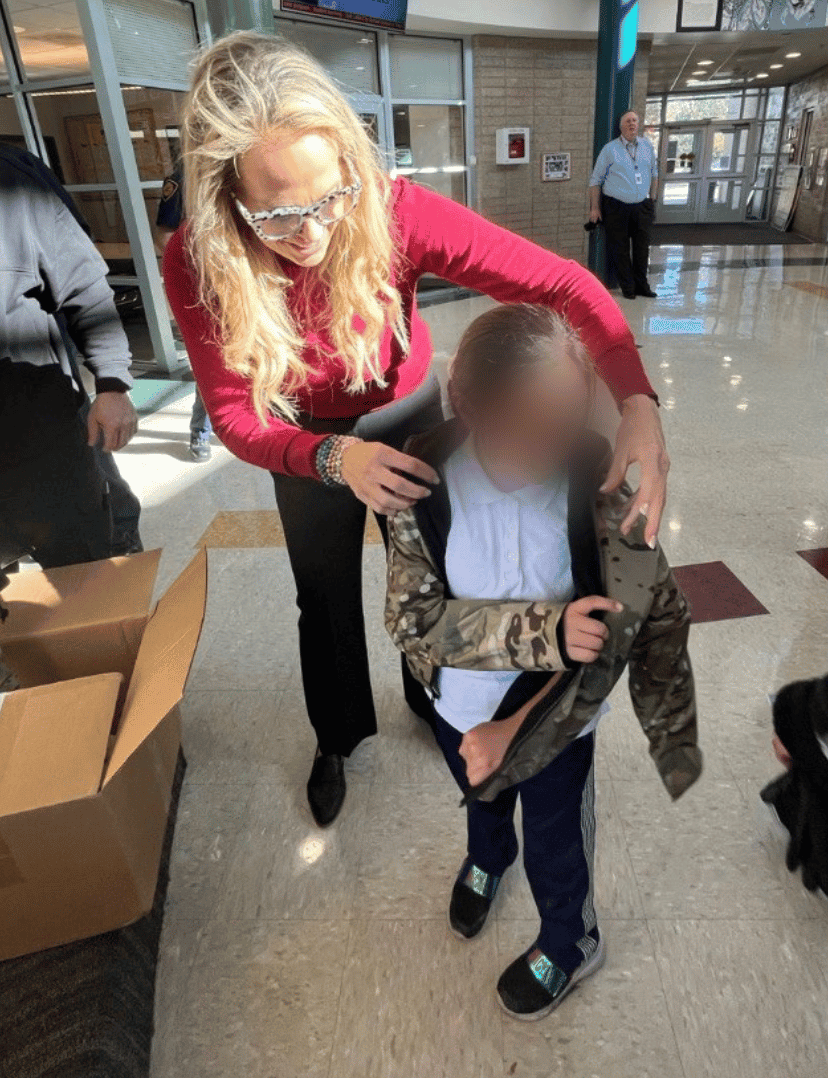
by California Casualty | Calcas Connection, In Your Community |
California Casualty has proudly worked with the Oregon Education Association (OEA) as their exclusive auto & home provider since 1974. Recently our Account Development Manager, DeeDee Templeton, made a visit to the OEA headquarters in Portland to meet with board members of the OEA Foundation to deliver a special contribution on behalf of the California Casualty Charitable Contributions Committee.
In attendance and pictured above (left to right): Stephen Siegel – OEA Region I Vice President, Jennifer Underhill -OEA District 2 Board Director, Forrest Cooper – OEA District 4 Board Director, Enrique Farrera – OEA Vice President, and DeeDee Templeton- California Casualty Account Development Manager.
The OEA Foundation provides educators with grants up to $100 to help students meet basic, urgent, and immediate needs so they can succeed in school. Over the past 28 years, the OEA Foundation has purchased countless pairs of eyeglasses, provided many students with their first warm winter coat, paid for dental work and doctor visits, fitted new shoes on lots of feet, and even replaced a broken bedroom window. The Foundation is completely funded through the generosity of our members and community partners, and 100% of funding is used to support Oregon’s students.
The California Casualty Charitable Contributions Committee values the great work of the OEA Foundation and is honored to be able to provide support to the education community. OEA Vice President, Enrique Farrera stated “The OEA Foundation and students from all over Oregon appreciate the collaboration of California Casualty and their financial support. Without their contribution we would not be able to help so many students.”
To learn more about the OEA Foundation and support this organization, visit here.
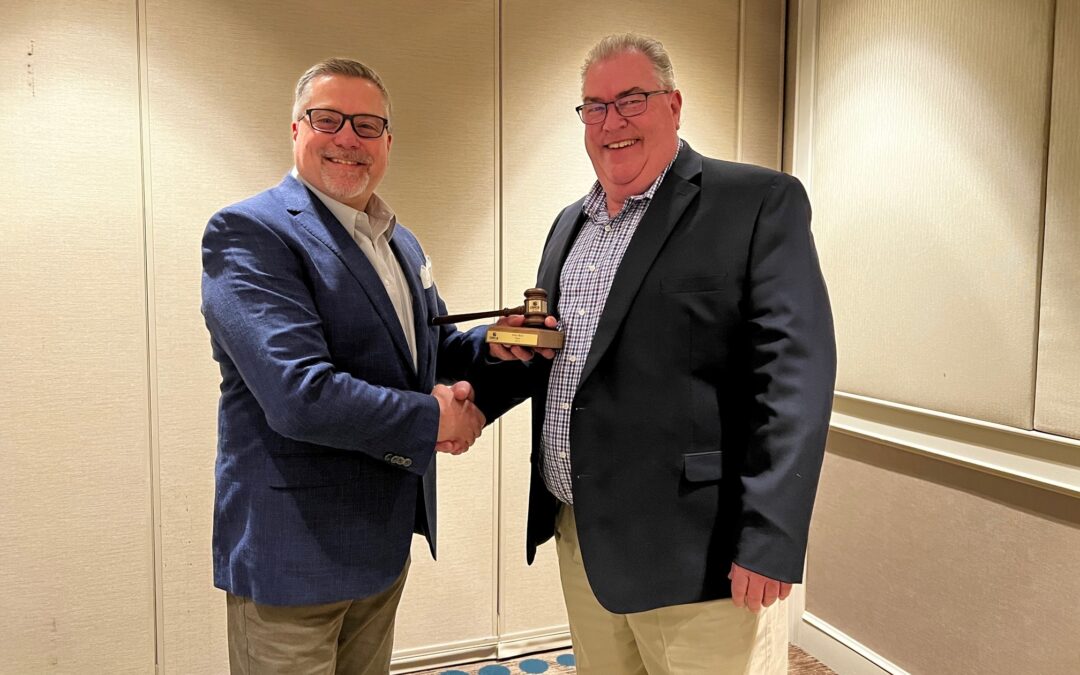
by California Casualty | Calcas Connection |
Congratulations to California Casualty’s Senior Business Analyst Greg Best on being selected as the 2023 Chairman of the Collision Industry Electronic Commerce Association (CIECA).
It takes a lot of companies working together to help keep vehicles safely on the road. CIECA is a nonprofit industry association created to develop a common language that enables members of the collision industry to communicate quickly and efficiently. CIECA exists to develop the Standards that member companies from all segments of the collision industry use to exchange information with their partners.
Use of the CIECA Standards enables insurers, like California Casualty, to help control costs as a business and service our customers more effectively in the event of a claim. For example, the highly-automated processes most insurers use to assign
vehicles to repair shops and to receive estimates and invoices are driven by CIECA Standards.
California Casualty is a Major Corporate Member of CIECA. And Best, who has been with us for almost 11 years, has held many positions within CIECA since his induction in 2014, including Secretary, Treasurer, and Vice Chair on the Executive Committee. Now as Chairman, he will be responsible for working with the Executive Director on overseeing the business operations of the Association and participating in various committees working with the standards.
“I am proud to serve as CIECA’s 2023 chair and have the opportunity to assist all of our partners on the journey through the development of our next-generation CIECA Open API Standards (CAPIS),” said Best. “I look forward to continuing the work of the executive committee and our members as we collaborate and evolve these Standards to meet the changing technological needs of the industry.”
These CIECA standards will continue to help California Casualty’s mission to provide the highest levels of service and care to our community heroes, by allowing a quicker integration with other members of the collision industry.
Congratulations to Greg on this superior achievement.

by California Casualty | Calcas Connection |
7.3 million families are living in poverty in the United States. For these families and individuals, the winter months are more expensive meaning they may not have the budget to buy winter coats for their children.
‘Coats for Kids’ was established in 2013 by the Professional Fire Fighters of Utah (PFFU) to combat one of the most fundamental hardships of childhood poverty- the absence of a warm winter coat.
In Utah, and many other communities across the country, the lack of a winter coat often results in frequent school absenteeism which translates to forgone learning, missed opportunities for socialization and play, and the loss of balanced nutrition provided through the school’s meal program. Helping students stay warm as they walk to and from school helps prevent illness and leads to increased attendance, allowing children of families in need to experience the critical childhood benefits their school has to offer.
For more than a decade, PFFU has watched the problem of childhood poverty creep mercilessly into the homes of the communities it serves. Poverty ravages families without discrimination – and by necessity those struggling to survive naturally prioritize food, heat, and rent above winter clothing.

Each year California Casualty partners with the PFFU to deliver winter coats to children in need in their area through PFFU’s ‘Costs for Kids’ program. There is no denying the joy of a child being zipped into their brand-new coat by their hometown heroes. And to date, we’ve donated over 2,500 coats in fourteen different elementary schools to children in need.
California Casualty Field Marketing Manager, Michelle Hawkins attended this year’s event at Mountain View Elementary School in Salt Lake City.
*Children’s faces have been blurred for privacy
“This was my first time attending Coats for Kids alongside members of PFFU.,” Said Michelle. “The care and cheer PFFU and Salt Lake City Fire Members brought to the students and staff of Mountain View was magical. This was a special group of people serving their community in a way that will impact those students’ lives forever.
Students at Mountain View in a variety of grades received a total of 300 coats to help them stay warm and safe during the winter months ahead.
This article is furnished by California Casualty, providing auto and home insurance to educators, law enforcement officers, firefighters, and nurses. Get a quote at 1.866.704.8614 or www.calcas.com.
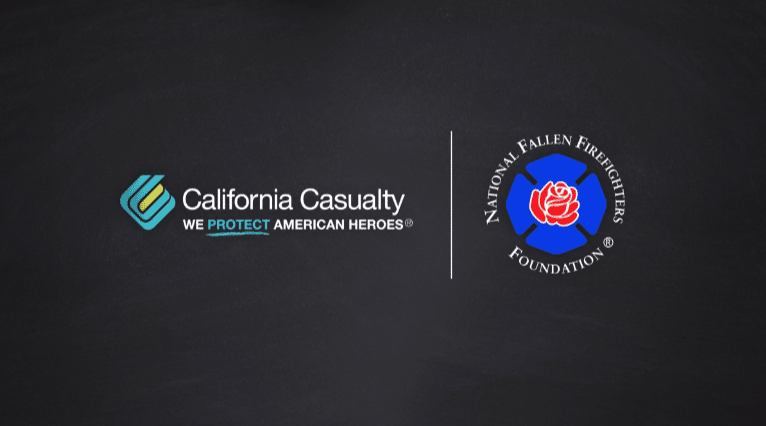
by California Casualty | Calcas Connection |
A moment of silence filled the Red Rocks Amphitheatre in Morrison, Colorado on Sept. 11, 2022. Despite the thousands in attendance, you could hear a pin drop. Firefighters clad in full gear—helmets, packs, boots—stood at attention, some holding high the name tags of fallen frontline heroes, those who gave their lives on that fateful day, so that others may live.
This was the Red Rocks 9/11 Memorial Stair Climb held on the 21st anniversary of our national tragedy. At precisely 9:02 am, the time that the first plane hit the Towers, bootsteps began to echo in the Amphitheatre. Bagpipes played as men, women, and children began the trek that is the equivalent of 110 stories in the World Trade Center, symbolizing the heroic journey made by their fallen peers. Not even the span of two decades could dampen the emotion felt by those in attendance ready to make the climb, including California Casualty employees and their families.
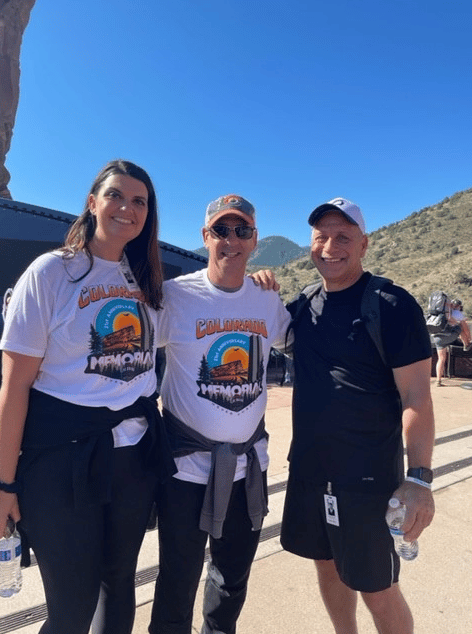
When the 9-11 attacks happened in 2001, fearful New Yorkers fled the World Trade Center. Firefighters and first responders headed in the opposite direction—into the danger. Of those heroes who answered the call, 343 did not make it out alive. This day was to remember them and to help the families of other frontline heroes who have lost their lives in the line of duty.
The National Fallen Firefighters Foundation (NFFF) holds these memorial stair climbs nationwide. Proceeds support the families of local fallen firefighters and the FDNY Counseling Service Unit.
As an organization committed to protecting first responders, California Casualty is a proud sponsor of these events. We supported 12 NFFF Stair Climbs this year in Indianapolis, IN; Chicago, IL, Morrison, CO; Dayton, OH; Springfield, MO; Columbus, OH; Imperial, CA; Bishop, CA; Oxon Hill, MD; Scottsdale, AZ; Salina, KS; Tollhouse, CA. Our employees and their families have attended many of these events.
“I wanted to reach out and thank you again for California Casualty’s support of our event,” said Colin Altman at the Gem City, Ohio Stair Climb. “We’ve been working with California Casualty since our first year (2014), and we’re so excited to continue the partnership!”
“Thank you all again for your sponsorship this year,” said Julie Mercer, Marketing Coordinator, Springfield, Missouri Memorial Climb. “It was great seeing you Saturday; thank you for joining us! Thank you also for the wonderful snacks for the climbers, I know they really enjoyed having them. Hope you made it home safe. We hope to see you again next year.”
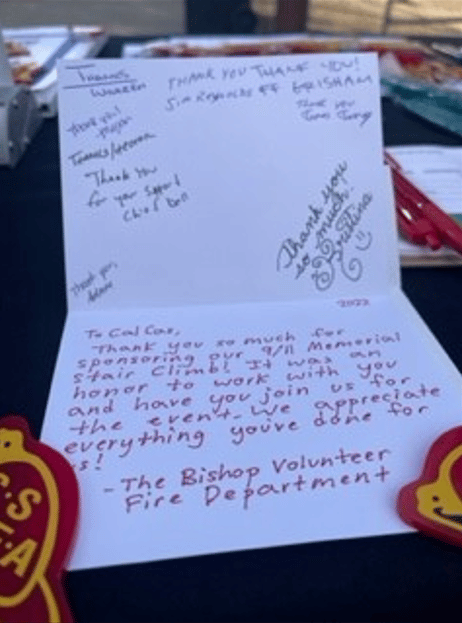
National Fallen Firefighters Foundation Partner Award
California Casualty works hand-in-hand with the National Fallen Firefighters Foundation (NFFF) to honor those who have made the ultimate sacrifice and their families. Aside from the annual stair climb events, our sponsorship supports training and education, such as NFFF’s Every Firefighter Goes Home and the Taking Care of Our Own program which help prevent in-the-line-of-duty deaths. And some of our funds contribute to financial assistance for families of fallen firefighters and the National Fallen Firefighters Memorial Scholarship Fund. These scholarships are awarded to spouses, children, and step-children of fallen firefighters.
Because of our continued support of the initiatives of the National Fallen Firefighters Foundation we were awarded this plaque for our longtime partnership.
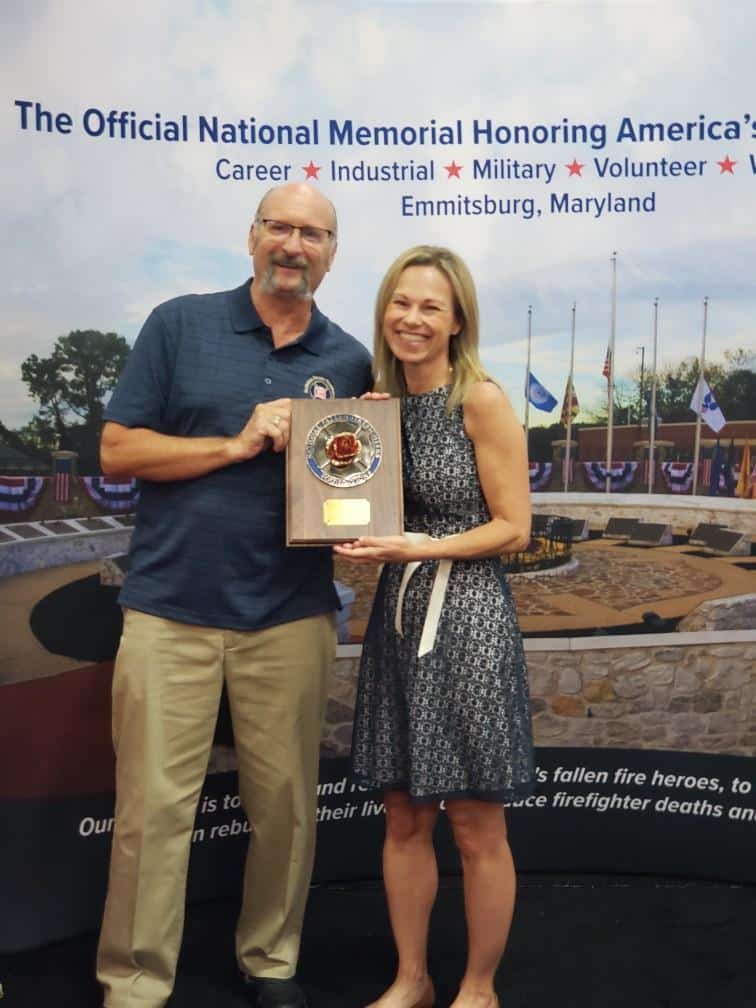
Roxanne Dean, Vice President of Partner Relations at California Casualty, accepted the plaque on behalf of the company from NFFF Consultant, Bill Hinton. This award is given to longtime corporate sponsors of the NFFF to show gratitude for their partnership and support of the Foundation and the families of the fallen heroes.
Join California Casualty in supporting the efforts of the National Fallen Firefighters Foundation by visiting their webpage at www.firehero.org and by making a donation to help the families who have lost a loved one at www.firehero.org/donate.
This article is furnished by California Casualty, providing auto and home insurance to educators, law enforcement officers, firefighters, and nurses. Get a quote at 1.866.704.8614 or www.calcas.com.

by California Casualty | Calcas Connection, Safety |
Creating a spooky Halloween mood often relies on great lighting effects in your home and yard. Glowing jack-o-lanterns, flickering luminaries, and strategically placed uplighting are all classic fare.
But they can also pose a fire threat. The National Fire Protection Association estimates that Halloween decorations cause approximately 800 house fires per year, totaling $11 million in property damage. And that’s not counting the injuries sustained when flammable costumes meet heat sources or open flames.
Here are some do’s and don’ts to make your Halloween safer — without giving up on the spookiness!
Decorations
Many decorations are flammable due to materials or the use of candles and other heat elements. In fact, . Make sure yours pass the safety check:
Jack-o-Lanterns – These are the ubiquitous, favorite Halloween decoration of most households.
-
- DON’T use a candle as your lighting feature. The pumpkin can easily be tipped over and catch its surroundings on fire, whether that’s dry brush or a porch outside, or upholstery or carpeting inside.
- DO use an LED light, glow stick, or electric candle instead.
Flammable decorations – These can light up in an instant, igniting from live flames as well as heat sources like heaters and light bulbs.
-
- DON’T use cornstalks, hay bales, dried flowers, or crepe paper. And don’t put flammable decorations in the path of exits, which creates a serious obstruction risk in case your family needs to exit quickly.
- DO use flame-resistant or non-flammable materials wherever possible. Avoid having a wood-burning fire inside if it may become unattended due to holiday commotion or trick or treaters. Outside, have a hose and buckets of water ready for any outdoor emergencies.
Paper bag luminaries – Another holiday mainstay, these decorations give a warm, welcoming lighted pathway up to a house.
-
- DON’T use live candles. Paper bags are extremely flammable and are prone to tip over with just a slight breeze.
- DO use an electric candle instead which, even if tipped over, won’t cause any damage.
Candles – More than a third of Halloween home fires each year are started by a candle. A live flame is never safe – inside, outside or anywhere.
-
- DON’T use candles for any holiday decorations.
- DO use electric candles or LED lights instead. Just doing a Google search on “LED lights Halloween” will bring up a range of options for creative, fun ways to give a spooky lighting effect.
Costumes
Unfortunately, a lot of Halloween costumes pose a fire hazard. Follow these tips to keep you and your family safe.
-
- Only choose flame retardant materials.
- Avoid costumes that are bulky or billowy or have long trailing fabric.
- Teach kids to stay away from open flames, including jack-o-lanterns and luminaries, while they’re trick-or-treating.
- Give them glow sticks or flashlights to light their way on the big night.
- If your child’s costume has a mask, make sure the eye holes are large enough so she/he can easily see out of it.
- Review “Stop! Drop! And Roll!” with your kids, making sure everyone understands and passes a practice round.
Final Reminders
Make sure well ahead of time that all your fire and smoke alarms are working and ready. Also, remember that even if you take fire-safety steps, your neighbors might not – and if their home catches fire, yours could be imperiled. Review these fire safety tips from firefighters, and update your family’s evacuation plan, just to be on the safe side.
By following Halloween fire safety precautions, you can make this scariest night of the year all about the fun kind of scary instead of the bad kind of scary.
This article is furnished by California Casualty, providing auto and home insurance to educators, law enforcement officers, firefighters, and nurses. Get a quote at 1.866.704.8614 or www.calcas.com.
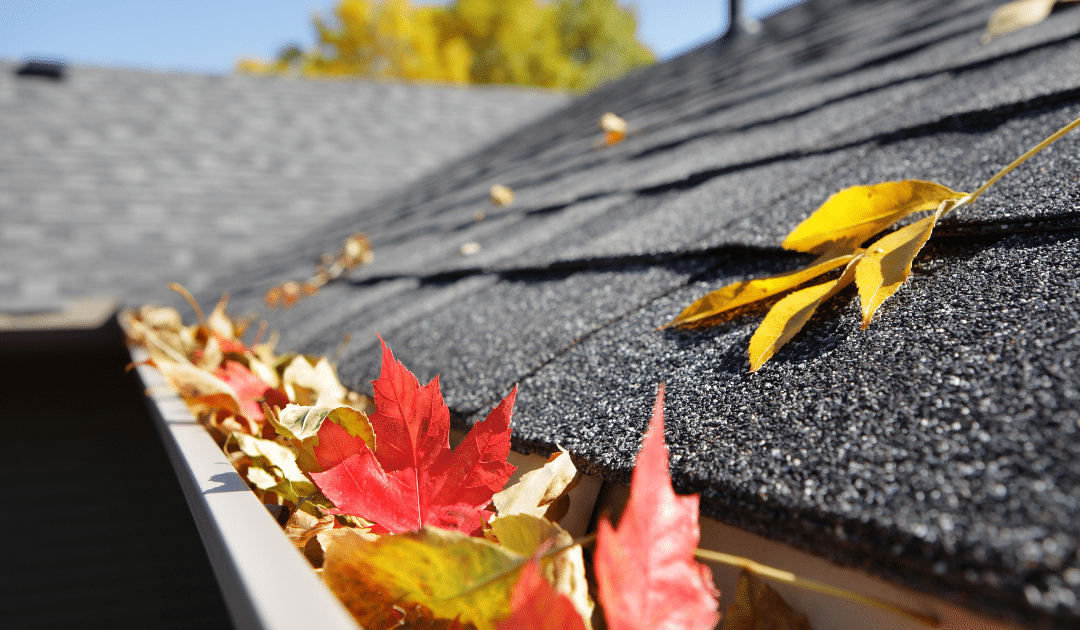
by California Casualty | Calcas Connection, Homeowners Insurance Info |
“Clean the gutters:” It’s one of those perennial to-do list items that never seem to get crossed off. One season runs into the next, and before you know it, winter has arrived and your gutters are still full of debris.
Unfortunately, that can wreak a lot of havoc on your house, from water and structural damage to pest problems and more. And those problems will bring repair and replacement costs that can easily be avoided.
Check out the 6 ways below that clogged gutters can imperil your home, and 6 tips at the bottom to get ahead of the problem.
Structural Damage
Clogged gutters cause water run-off and overflow, which can collect around your home’s foundation. Over time, that water can cause cracks in your foundation, which leads to huge repair costs. When ice dams form, excess water can also seep through your roof.
Damage to Gutter Components
When fascia boards – the long, straight boards running along the lower edge of your roof – are exposed to excess water, they can crack, warp and start shedding paint. If your gutters are weighted down with debris and/or frozen water, they can begin sagging. This can result in tearing and pulling away from the exterior walls, or even coming loose completely.
Interior Damage
Whether from ice dams or a clogged gutter that sends water running in all directions, your home interior is also at risk of damage. This can happen from water leaking underneath shingles and through the roof, affecting electrical systems, appliances, and furniture. Oftentimes, interior walls will show mold, leaks, and water stains, and cracks will appear on ceilings. Window and door frames can also warp and rot.
Ice Dams
These are a main culprit behind all the issues above because they force excess water away from the proper exit route (down the downspout), leaving it up to chance and gravity for water finding its way downhill. In addition, they also cause icicles, which – although picturesque – can injure people and pets, as well as damage your deck and roof.
Pests
A gutter full of leaves can harbor infestations of all kinds. Rodents love just about any dark, cozy place and can quickly start nesting and breeding. Before long, they may try to enter your home through the walls, under the roof, etc. Besides rodents, insects will quickly make a home in the decaying matter stuck in your gutters. This means mosquitoes, cockroaches, flies, and termites, all of which can also make inroads into your home. Finally, mold, parasites, mildew, and spores flourish in a damp gutter, posing a health risk to you and your family.
Avoidable Injuries
If you decide to tackle the gutters after winter has already arrived, you may be putting yourself at risk in trying to clean them. Icy and cold conditions make for poor ladder safety and the chances of injury increase. If you spot any structural damage or hard-to-remove ice dams, you may be tempted to fix it yourself, but at that point hiring a professional is much safer.
Gutter Cleaning Quick Tips:
The best time to clean is during autumn, after most of the season’s leaves have fallen (many of which will find a home in your gutters!). Here are 6 tips to get you started.
- Use a safe and secure ladder, and practice ladder safety.
- Rake debris and leaves off the roof before attacking gutters (be sure to wear rubber-soled shoes).
- Wear safety eyewear and gloves.
- Use a plastic gutter scooping tool.
- Clear the downspouts.
- Watch out for power lines.
Once fall gives way to winter, your window of opportunity for safely cleaning gutters closes until spring. Best to start early, before damage – and related repair costs – happen.
This article is furnished by California Casualty. We specialize in providing auto and home insurance to educators, law enforcement officers, firefighters, and nurses. Get a quote at 1.866.704.8614 or www.calcas.com.






